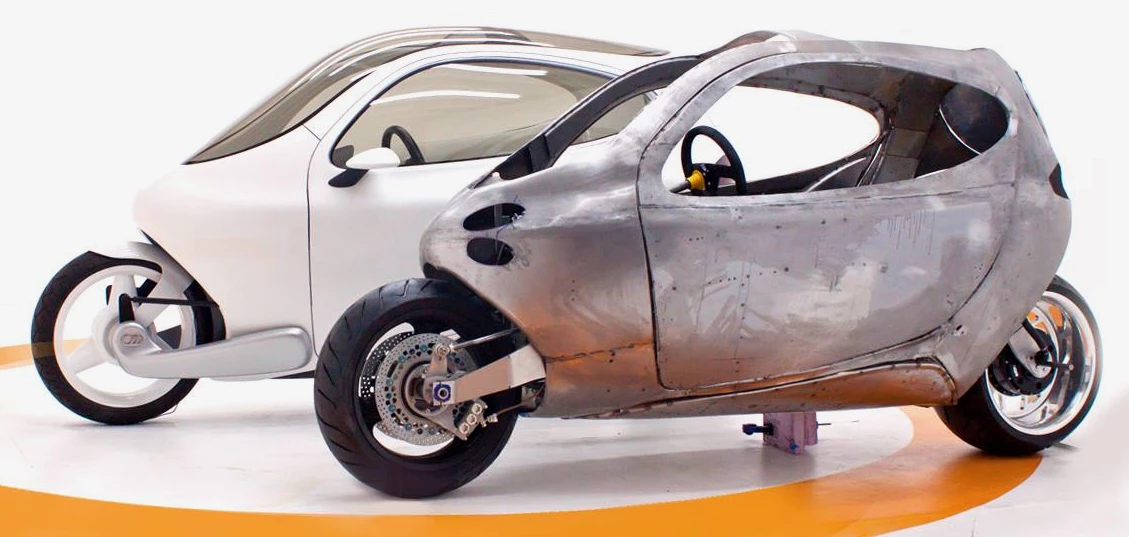There are definitely a lot of daydreamers and big thinkers out there, showing off their 3D renderings of inventions that “ought to work” – if they were to actually exist. It’s understandable, therefore, that many readers reacted with skepticism when we first reported on Lit Motors’ C-1. The designers of the fully-enclosed electric motorcycle claimed that it would be able to stand up on its own, thanks to electronically-controlled onboard gyroscopes. Well, while there may not be a C-1 in a showroom near you just yet, the folks at Lit have indeed succeeded in building a functioning prototype of their vehicle. We made the trip to their San Francisco workspace, to have a look for ourselves.
The rather steampunk-looking proof-of-concept prototype is electronically limited to a speed of about 10 mph (16 km/h), and its two scaled-down gyros generate only half of the approximately 1,300 foot-pounds (1,763 Nm) of torque planned for the production version. It turns out that that’s still enough, however, to keep it upright while being piloted around the local streets – or when being yanked sideways by a Land Rover, as you’ll see in our video.
While the vehicle that we saw is still very much a work in progress, Lit Motors president Daniel Kim says that they have learned a lot from making it, particularly when it comes to keeping the weight down on the final version. “I have a couple of ideas for our next revision,” he told us. “I’ve got some tricks up my sleeve for what the real potential of this vehicle will be.”

Kim hopes to be selling C-1’s by 2014. By that time, they should reportedly have a top speed of 125 mph (201 km/h), a battery range of up to 200 miles (322 km) per charge, and space for a second passenger – all for US$16,000.
In the meantime, however, take a look at our visit with Daniel, and check out the prototype in action.































